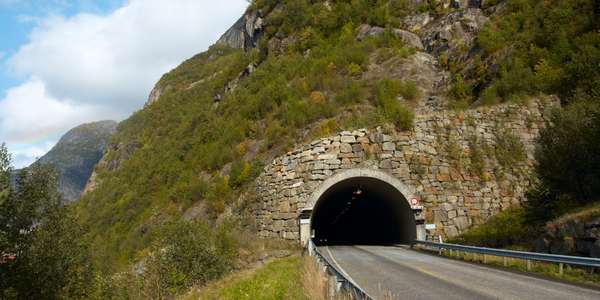公司规模
SME
地区
- America
国家
- United States
产品
- Acumatica Financial Management
- Acumatica Manufacturing Edition
- Acumatica Customer Relationship Management
技术栈
- Acumatica Cloud ERP
实施规模
- Enterprise-wide Deployment
影响指标
- Cost Savings
- Productivity Improvements
技术
- 平台即服务 (PaaS) - 应用开发平台
适用行业
- 建筑与基础设施
适用功能
- 离散制造
- 销售与市场营销
用例
- 自动化制造系统
- 库存管理
服务
- 系统集成
关于客户
Boulder Creek Stone 是一家家族企业,是石材和薄砖贴面的顶级制造商。该公司总部位于明尼苏达州明尼阿波利斯,在明尼阿波利斯设有制造工厂,在明尼苏达州、宾夕法尼亚州和德克萨斯州设有配送中心。除了制造之外,Boulder Creek Stone 还通过其零售展厅 Condor Fireplace and Stone 提供石材安装服务以及来自五家制造商的燃气和燃木壁炉和炉灶。该公司使用不同的系统组合来运营其独立的业务线,这很难管理。他们正在寻找一种集中的、更有效的方式来运行会计和业务运营。
挑战
Boulder Creek Stone 是一家家族企业,主要生产石材和薄砖贴面,该公司使用多种系统运营业务。Sage 用于库存、销售订单处理和应收账款,而 Microsoft Dynamics 则负责处理总帐、工资单和应付账款功能。数据迁移是使用 Excel 电子表格手动完成的,Crystal Reports 提供了一些业务报告。该公司发现很难有效地跟踪不同的业务线,而且无法深入研究公司数据来发现趋势或运营缺陷。员工浪费了大量时间检查重复条目、核实多个纸质文档之间的准确性以及在出现问题时进行核对。由于使用的是“外行 IT”,即使是在 Sage 中进行小规模的定制也很困难,这意味着当 Boulder Creek 想要定制 Sage 以符合公司的经营方式时,它必须花费数千美元的 IT 咨询费。
解决方案
Boulder Creek Stone 决定集中使用 Acumatica 的 ERP,这不仅为公司节省了数千美元,还带来了以前无法实现的业务功能。他们开始使用 Acumatica Cloud ERP,这是一款价格实惠的 ERP,可以处理业务的多个方面,包括 CRM,同时还可以自动化和集中化许多手动纸质流程。该公司停止使用 Salesforce,选择使用 Acumatica 的 CRM 来简化销售和客户服务之间的沟通。借助 Acumatica 的自动通知,他们创建了触发器,当订单发生时提醒销售人员,从而避免了多次打电话。
运营影响
数量效益

Case Study missing?
Start adding your own!
Register with your work email and create a new case study profile for your business.
相关案例.

Case Study
IoT System for Tunnel Construction
The Zenitaka Corporation ('Zenitaka') has two major business areas: its architectural business focuses on structures such as government buildings, office buildings, and commercial facilities, while its civil engineering business is targeted at structures such as tunnels, bridges and dams. Within these areas, there presented two issues that have always persisted in regard to the construction of mountain tunnels. These issues are 'improving safety" and "reducing energy consumption". Mountain tunnels construction requires a massive amount of electricity. This is because there are many kinds of electrical equipment being used day and night, including construction machinery, construction lighting, and ventilating fan. Despite this, the amount of power consumption is generally not tightly managed. In many cases, the exact amount of power consumption is only ascertained when the bill from the power company becomes available. Sometimes, corporations install demand-monitoring equipment to help curb the maximum power demanded. However, even in these cases, the devices only allow the total volume of power consumption to be ascertained, or they may issue warnings to prevent the contracted volume of power from being exceeded. In order to tackle the issue of reducing power consumption, it was first necessary to obtain an accurate breakdown of how much power was being used in each particular area. In other words, we needed to be able to visualize the amount of power being consumed. Safety, was also not being managed very rigorously. Even now, tunnel construction sites often use a 'name label' system for managing entry into the work site. Specifically, red labels with white reverse sides that bear the workers' names on both sides are displayed at the tunnel work site entrance. The workers themselves then flip the name label to the appropriate side when entering or exiting from the work site to indicate whether or not they are working inside the tunnel at any given time. If a worker forgets to flip his or her name label when entering or exiting from the tunnel, management cannot be performed effectively. In order to tackle the challenges mentioned above, Zenitaka decided to build a system that could improve the safety of tunnel construction as well as reduce the amount of power consumed. In other words, this new system would facilitate a clear picture of which workers were working in each location at the mountain tunnel construction site, as well as which processes were being carried out at those respective locations at any given time. The system would maintain the safety of all workers while also carefully controlling the electrical equipment to reduce unnecessary power consumption. Having decided on the concept, our next concern was whether there existed any kind of robust hardware that would not break down at the construction work site, that could move freely in response to changes in the working environment, and that could accurately detect workers and vehicles using radio frequency identification (RFID). Given that this system would involve many components that were new to Zenitaka, we decided to enlist the cooperation of E.I.Sol Co., Ltd. ('E.I.Sol') as our joint development partner, as they had provided us with a highly practical proposal.

Case Study
Splunk Partnership Ties Together Big Data & IoT Services
Splunk was faced with the need to meet emerging customer demands for interfacing IoT projects to its suite of services. The company required an IoT partner that would be able to easily and quickly integrate with its Splunk Enterprise platform, rather than allocating development resources and time to building out an IoT interface and application platform.

Case Study
Bridge monitoring in Hamburg Port
Kattwyk Bridge is used for both rail and road transport, and it has played an important role in the Port of Hamburg since 1973. However, the increasing pressure from traffic requires a monitoring solution. The goal of the project is to assess in real-time the bridge's status and dynamic responses to traffic and lift processes.

Case Study
Bellas Landscaping
Leading landscaping firm serving central Illinois streamlines operations with Samsara’s real-time fleet tracking solution: • 30+ vehicle fleet includes International Terrastar dump trucks and flatbeds, medium- and light-duty pickups from Ford and Chevrolet. Winter fleet includes of snow plows and salters.

Case Study
Condition Based Monitoring for Industrial Systems
A large construction aggregate plant operates 10 high horsepower Secondary Crusher Drive Motors and associated conveyor belts, producing 600 tons of product per hour. All heavy equipment requires maintenance, but the aggregate producer’s costs were greatly magnified any time that the necessary maintenance was unplanned and unscheduled. The product must be supplied to the customers on a tight time schedule to fulfill contracts, avoid penalties, and prevent the loss of future business. Furthermore, a sudden failure in one of the drive motors would cause rock to pile up in unwanted locations, extending the downtime and increasing the costs.Clearly, preventative maintenance was preferable to unexpected failures. So, twice each year, the company brought in an outside vendor to attach sensors to the motors, do vibration studies, measure bearing temperatures and attempt to assess the health of the motors. But that wasn’t enough. Unexpected breakdowns continued to occur. The aggregate producer decided to upgrade to a Condition Based Monitoring (CBM) sensor system that could continually monitor the motors in real time, apply data analytics to detect changes in motor behavior before they developed into major problems, and alert maintenance staff via email or text, anywhere they happened to be.A wired sensor network would have been cost prohibitive. An aggregate plant has numerous heavy vehicles moving around, so any cabling would have to be protected. But the plant covers 400 acres, and the cable would have to be trenched to numerous locations. Cable wasn’t going to work. The aggregate producer needed a wireless solution.








